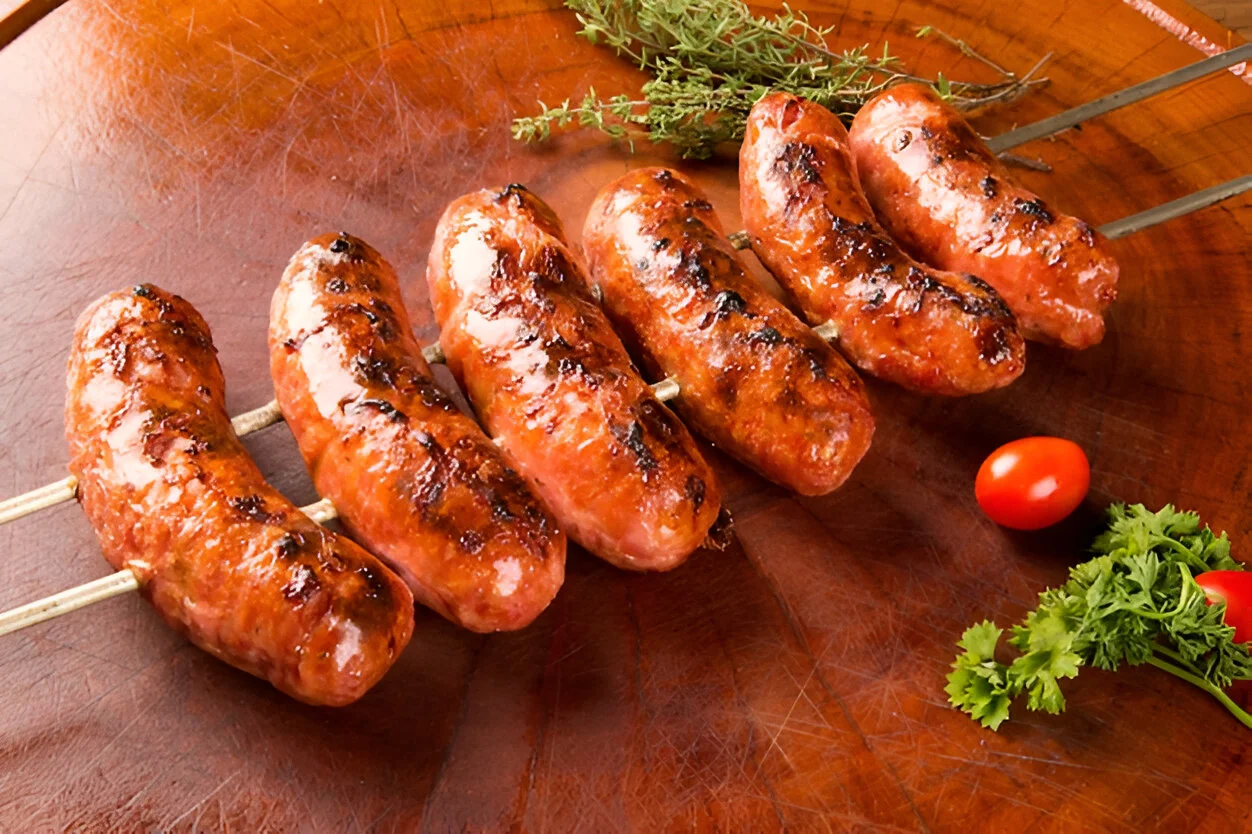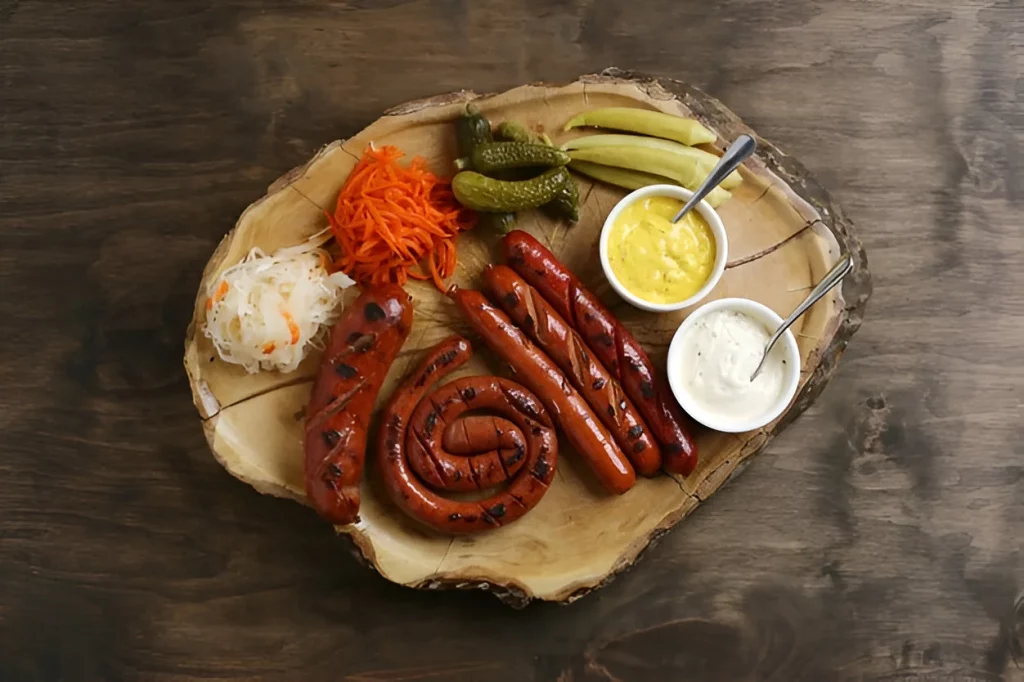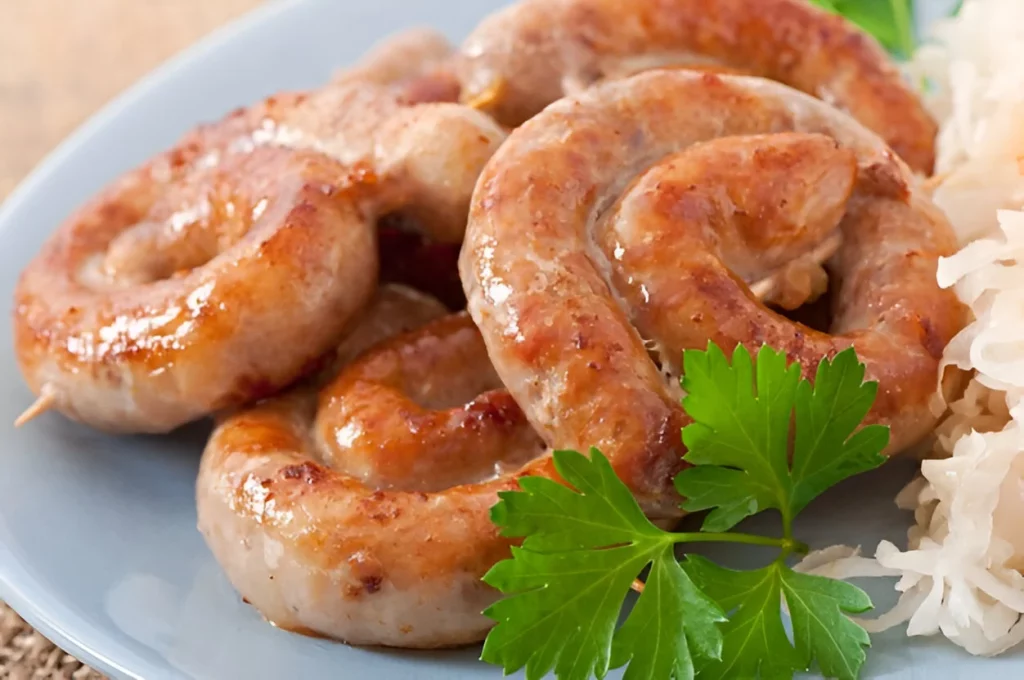Understanding Boudin and the Secrets of Cajun Sausage
Introduction to Boudin
When exploring the rich flavors of Cajun cuisine, a common question arises: “Is boudin already cooked?” This unique sausage, integral to Louisiana’s culinary heritage, often prompts curiosity about its preparation and consumption. Boudin, typically filled with a savory blend of pork, rice, and spices, represents a fusion of French, Spanish, and African influences. Understanding whether boudin is pre-cooked or requires additional cooking is essential for anyone looking to enjoy this distinctive delicacy. Its popularity has spread beyond its regional origins, captivating food enthusiasts with its unique flavor and texture.
What is Boudin?
At its core, boudin is a type of sausage central to Cajun and Creole cooking. Its primary ingredients typically include pork, liver, rice, onions, and a blend of spices. However, variations abound, with some recipes incorporating seafood or other meats. The preparation of boudin involves cooking the ingredients, grinding them, and then stuffing the mixture into casings. This process results in a sausage that’s rich in flavor and steeped in tradition.
Boudin’s regional variations are as diverse as its history. In Louisiana, for example, you’ll find boudin blanc, a white sausage made without blood, and boudin noir, which includes blood as a key ingredient. These variations not only add to the culinary diversity but also reflect the cultural influences that have shaped this delicacy. To learn more about the different types of sausages, including boudin, you can visit Types of Sausage on Wikipedia.
Is Boudin Already Cooked?
A common question among boudin enthusiasts is whether it’s already cooked. The answer varies depending on the preparation method. Traditionally, boudin is pre-cooked, as the ingredients are cooked before being stuffed into the casing. However, it’s often sold in a state that requires further cooking or reheating.
When preparing boudin at home, it’s crucial to understand the cooking techniques to ensure it’s safe to eat and delicious. If you’re unsure about the cooking status of your boudin, look for indicators such as the color and texture of the sausage. Pre-cooked boudin typically has a firmer texture and a more pronounced coloration compared to its raw counterpart.
For those interested in the culinary techniques behind preparing various dishes, including boudin, Wikipedia’s Cooking Techniques page offers valuable insights. Additionally, understanding the different methods of preparation, such as grilling, baking, or simmering, can enhance your boudin experience, ensuring that each bite is as flavorful as it is authentic.
Preparing and Serving Boudin
Cooking Boudin :
Cooking boudin, a beloved Cajun cuisine specialty, involves more than just heating it up; it’s about preserving its unique flavors and textures. Whether you’re a novice or a seasoned cook, these methods and tips will help you prepare boudin perfectly:
- Grilling: Grilling is a popular method that imparts a smoky flavor to boudin. Preheat your grill to a medium-low heat to avoid burning the casing. Lightly oil the grill grates, then place the boudin on the grill. Cook for about 2-3 minutes on each side, turning gently to prevent the casings from bursting. The goal is to achieve a crispy exterior while keeping the interior moist and juicy.
- Baking: Baking boudin in an oven is a fuss-free method that yields evenly cooked sausage. Preheat your oven to 350°F. Place the boudin on a baking sheet lined with parchment paper for easy cleanup. Bake for about 20-25 minutes, turning halfway through the cooking time. This method is ideal for keeping the boudin moist and tender.
- Simmering: For those who prefer a softer casing, simmering is an excellent choice. Fill a pot with enough water to cover the boudin and bring it to a gentle simmer — not a rolling boil, as high heat can cause the casings to burst. Add the boudin and simmer for about 10-15 minutes. This method infuses the boudin with additional moisture, making it exceptionally tender.
- Pan-Frying: If you’re short on time, pan-frying is a quick way to heat boudin. Slice the boudin into half-inch rounds. Heat a non-stick skillet over medium heat and add the boudin slices. Cook for 2-3 minutes on each side until they turn golden brown. This method creates a delightful contrast between the crispy exterior and the soft, flavorful interior.
- Microwaving: For a quick heat-up, you can microwave boudin. Place the boudin in a microwave-safe dish, cover it with a damp paper towel, and microwave on high for 1-2 minutes. While not the preferred method for flavor development, it’s a convenient option for a quick meal.
Each method offers a different dimension to the boudin’s taste and texture. For those who enjoy experimenting with various cooking techniques, the Cooking Techniques page on Wikipedia provides a wealth of information.
Related : how to cook boudin a culinary journey into cajun cuisine
Serving Suggestions for Boudin :
Boudin, a versatile and flavorful Cajun cuisine staple, offers a myriad of serving possibilities that can delight any palate. Whether you’re hosting a casual get-together or a formal dinner, boudin can be the star of your meal with these creative serving ideas:
- As a Main Dish: Boudin serves as a hearty main course. Pair it with classic Cajun or Creole sides like dirty rice, collard greens, or maque choux for a complete meal. The spicy and rich flavors of boudin beautifully complement these traditional dishes, creating a balanced and satisfying dining experience.
- In Sandwiches and Wraps: Elevate your sandwich game by adding slices of grilled or baked boudin. Layer it in a po’boy with lettuce, tomatoes, and a spicy remoulade sauce, or wrap it in a tortilla with beans, cheese, and salsa for a Cajun-Mexican fusion.
- As an Appetizer: Boudin balls are a popular choice for appetizers. Roll cooked boudin into balls, coat them in breadcrumbs, and deep-fry until golden. Serve these crispy delights with dipping sauces like Creole mustard or a spicy aioli.
- In Breakfast Dishes: Incorporate boudin into your breakfast or brunch menu. Use it as a filling for omelets, mix it into scrambled eggs, or serve it alongside pancakes or waffles for a savory twist. Boudin also pairs well with grits, offering a true Southern breakfast experience.
- As a Salad Topping: For a lighter option, slice grilled boudin and place it atop a fresh green salad. The sausage adds a flavorful and protein-rich component to your salad, making it a more substantial meal.
- In Creative Culinary Creations: Don’t be afraid to get creative with boudin. Use it as a stuffing for bell peppers or mushrooms, incorporate it into casseroles, or even add it to soups and stews for extra depth of flavor.
For more inspiration on Cajun and Creole recipes, Pinterest offers a variety of ideas, which you can find here.
Health and Nutritional Aspects :
While boudin is undeniably delicious, it’s also important to consider its health and nutritional aspects. Boudin is a good source of protein and essential nutrients, but like many sausages, it can be high in fat and sodium. Here’s a closer look at its nutritional profile and tips for healthier consumption:
- Protein Content: Boudin is rich in protein, essential for building and repairing tissues in the body. Protein also plays a crucial role in maintaining muscle mass and supporting a healthy immune system.
- Fat and Sodium: Traditional boudin recipes can be high in fat, particularly saturated fat, and sodium. Consuming high amounts of saturated fat and sodium can increase the risk of heart disease and high blood pressure. Opt for versions made with leaner cuts of meat or consider portion control to mitigate these concerns.
- Carbohydrates and Fiber: The rice in boudin provides carbohydrates, which are the body’s primary energy source. However, boudin is low in dietary fiber. To increase fiber intake, consider serving boudin with high-fiber sides like vegetables or whole grains.
- Vitamins and Minerals: Boudin contains various vitamins and minerals, including iron, which is vital for transporting oxygen in the blood, and B vitamins, important for energy metabolism.
- Healthier Alternatives: For a healthier version of boudin, look for recipes that use lean meats, such as chicken or turkey, and include more vegetables. Some boudin varieties also replace rice with cauliflower rice, reducing carbohydrate content and adding more nutrients.
- Dietary Considerations: If you’re following a specific diet, such as gluten-free or low-fat, check the ingredients carefully. While traditional boudin is gluten-free, some commercial versions may contain additives that include gluten or other allergens.
- Moderation and Balance: As with any indulgent food, the key to enjoying boudin is moderation. Balance it with healthier food choices throughout the day, and consider it a treat rather than a staple in your diet.
Incorporating boudin into your diet can be a delightful culinary experience. By being mindful of its nutritional aspects and serving it in creative, balanced ways, you can enjoy this Cajun delicacy without compromising your health goals, visit Nutritional Value of Meat on Wikipedia.
FAQs
Q: How do I know if boudin is fully cooked?
A: Typically, boudin is pre-cooked, but you should heat it until it reaches an internal temperature of 160°F. Look for a change in color and texture as indicators.
Q: Can I eat boudin cold?
A: While pre-cooked boudin is safe to eat cold, heating it enhances its flavors and texture.
Q: What are some common ways to cook boudin?
A: Popular methods include grilling, baking, and simmering. Each method offers a unique taste and texture to the boudin.
Q: Is boudin suitable for a gluten-free diet?
A: Traditional boudin contains rice and meat, which are gluten-free. However, always check for cross-contamination or added ingredients that may contain gluten.
Q: Can I freeze boudin for later use?
A: Yes, you can freeze boudin. Thaw it in the refrigerator before reheating for the best quality.
Conclusion
In conclusion, boudin is more than just a sausage; it’s a culinary journey through the heart of Cajun and Creole traditions. Whether you’re savoring it grilled, baked, or simmered, boudin offers a unique taste experience that reflects the rich cultural tapestry of Louisiana. By understanding its preparation, cooking techniques, and serving suggestions, you can fully appreciate the artistry behind this beloved Louisiana delicacy. Embrace the diverse world of gourmet sausages and let boudin be a flavorful addition to your culinary repertoire.



